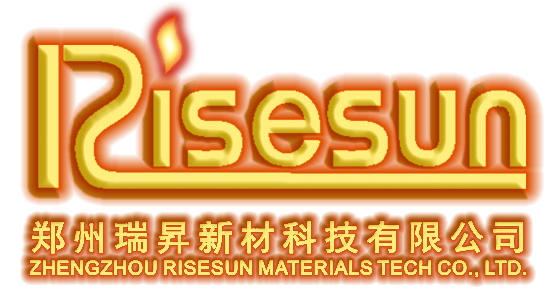30
2024
-
09
Why Molybdenum Disilicide Heating Elements Are Essential for High-Temperature Furnaces
Why Molybdenum Disilicide Heating Elements Are Essential for High-Temperature Furnaces Introduction to Molybdenum Disilicide Heating Elements Molybdenum Disilicide (MoSi2) heating elements have emerged as a vital component in high-temperature furnace applications. With the ability to withstand extreme temperatures and harsh environments, these heating elements play a significant role in variou
Why Molybdenum Disilicide Heating Elements Are Essential for High-Temperature Furnaces
Introduction to Molybdenum Disilicide Heating Elements
Molybdenum Disilicide (MoSi2) heating elements have emerged as a vital component in high-temperature furnace applications. With the ability to withstand extreme temperatures and harsh environments, these heating elements play a significant role in various industrial processes, from metal processing to ceramics and glass manufacturing. Understanding the unique characteristics and advantages of MoSi2 heating elements can illuminate their importance in high-performance heating applications.
The Unique Properties of Molybdenum Disilicide
Molybdenum Disilicide heating elements possess several unique properties that differentiate them from other materials used in high-temperature heating.
High-Temperature Resistance
One of the most remarkable features of MoSi2 heating elements is their ability to operate at elevated temperatures, typically ranging from 1400°C to 1800°C. This high thermal stability makes them suitable for applications where other materials would fail.
Oxidation Resistance
The oxidation resistance of Molybdenum Disilicide is another critical advantage. When exposed to high temperatures in oxidizing environments, MoSi2 forms a protective silicon dioxide layer that prevents further degradation, ensuring longevity and reliability in furnace operations.
Thermal Conductivity
MoSi2 exhibits excellent thermal conductivity, which allows for efficient heat transfer. This characteristic is essential for maintaining uniform temperature distribution within a furnace, leading to improved product quality and process efficiency.
Creep Resistance
Creep resistance is vital for any heating element operating under high stress. Molybdenum Disilicide maintains its structural integrity under prolonged exposure to high temperatures, minimizing deformation and ensuring consistent performance over time.
Applications of Molybdenum Disilicide Heating Elements
The versatility of Molybdenum Disilicide heating elements allows them to be utilized in a variety of applications across different industries.
Metal Processing
In the metal processing industry, MoSi2 heating elements are used in furnaces for sintering, melting, and heat treatment of metals. Their ability to withstand high temperatures ensures effective processing of materials such as steel, aluminum, and titanium.
Ceramics and Glass Manufacturing
The ceramics and glass sectors utilize MoSi2 heating elements for firing and shaping products. Their high thermal efficiency and temperature control capabilities lead to improved quality and reduced production times.
Research and Development
In research environments, Molybdenum Disilicide heating elements are employed for high-temperature experiments that require precise thermal management. Their performance reliability makes them essential for experimental setups involving various materials.
Advantages of Using Molybdenum Disilicide Heating Elements
The adoption of MoSi2 heating elements in high-temperature furnaces provides numerous benefits that enhance operational efficiency.
Cost-Effectiveness
Despite their higher initial cost, the durability and longevity of Molybdenum Disilicide heating elements translate into lower replacement and maintenance costs over time. This cost-effectiveness makes them an attractive option for industrial applications.
Energy Efficiency
MoSi2 heating elements operate with high energy efficiency, leading to reduced energy consumption and lower operational costs. Their effective heat transfer capabilities minimize energy waste, making them a responsible choice for environmentally-conscious industries.
Customization Options
Molybdenum Disilicide heating elements can be customized in terms of size, shape, and configuration to meet specific application needs. This flexibility allows manufacturers to optimize their heating solutions for various furnace designs.
Installation and Maintenance of Molybdenum Disilicide Heating Elements
Proper installation and maintenance are crucial for maximizing the performance and lifespan of MoSi2 heating elements.
Installation Guidelines
When installing Molybdenum Disilicide heating elements, it is essential to follow manufacturer guidelines closely. Proper alignment and secure mounting help prevent mechanical stress that can lead to premature failure.
Maintenance Practices
Routine inspections and maintenance are key to ensuring the longevity of MoSi2 heating elements. Regularly checking for signs of wear or damage, as well as cleaning the heating elements, can significantly extend their life.
Challenges and Considerations
While Molybdenum Disilicide heating elements offer numerous advantages, there are some challenges and considerations to keep in mind.
Material Fragility
MoSi2 can be brittle, making it susceptible to cracking under mechanical shock or stress. Careful handling during installation and operation is necessary to prevent damage.
Cost vs. Performance
While the initial investment in Molybdenum Disilicide heating elements may be higher than alternatives, the long-term performance benefits often justify the cost. Decision-makers must weigh initial expenses against potential savings in maintenance and energy efficiency.
Future Trends in Heating Element Technology
As technology advances, the future of heating elements, including Molybdenum Disilicide, looks promising.
Innovations in Material Science
Ongoing research in material science aims to enhance the performance characteristics of MoSi2 heating elements, potentially leading to even better thermal management solutions for high-temperature applications.
Integration with Smart Technologies
The integration of smart technologies and IoT in furnace operations is on the rise. Molybdenum Disilicide heating elements may be coupled with sensors and control systems for improved monitoring and efficiency in high-temperature environments.
FAQs About Molybdenum Disilicide Heating Elements
1. What is the maximum temperature that Molybdenum Disilicide heating elements can reach?
Molybdenum Disilicide heating elements can operate effectively at temperatures up to 1800°C, making them suitable for a wide range of high-temperature applications.
2. How long do Molybdenum Disilicide heating elements typically last?
The lifespan of MoSi2 heating elements can vary based on operational conditions but generally ranges from 1,500 to 3,000 hours with proper usage and maintenance.
3. Can Molybdenum Disilicide heating elements be used in vacuum environments?
Yes, MoSi2 heating elements can be used in vacuum environments, making them versatile for various industrial applications.
4. Are there any specific industries that heavily rely on Molybdenum Disilicide heating elements?
Industries such as metal processing, ceramics, and glass manufacturing are among the primary users of Molybdenum Disilicide heating elements due to their high-temperature capabilities.
5. What maintenance practices should be followed for Molybdenum Disilicide heating elements?
Regular inspection for wear, cleaning to remove contaminants, and ensuring proper alignment during installation are important maintenance practices to extend the life of MoSi2 heating elements.
Conclusion
Molybdenum Disilicide heating elements are essential for high-temperature furnaces, offering a unique combination of properties that enhance performance and reliability. Their high-temperature resistance, oxidation resistance, and thermal conductivity make them ideal for various industrial applications, while their cost-effectiveness and energy efficiency further solidify their place in the market. As technology advances, the future of MoSi2 heating elements remains bright, ensuring that they will continue to play a critical role in the evolution of high-temperature heating solutions.



